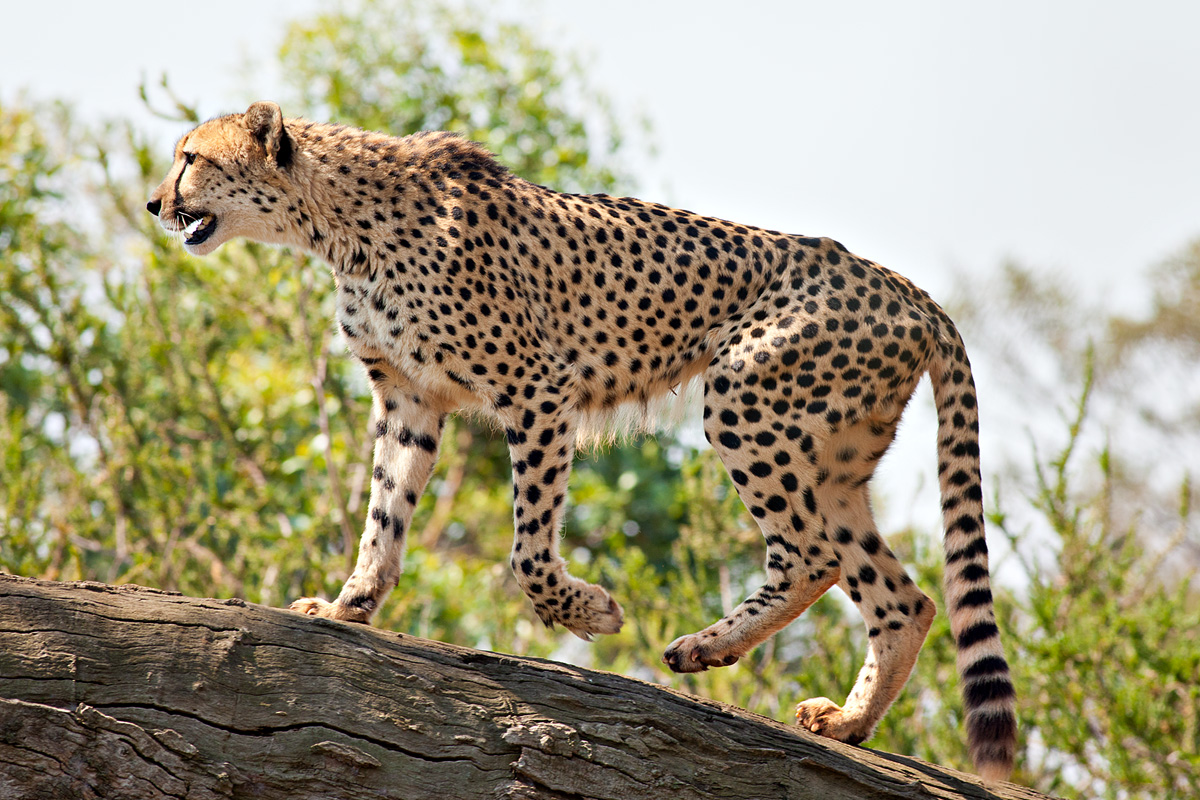Lemurs (Prosimians/Strepsirhini)
Lemurs are found off the east coast of Africa including Madagascar and adjacent islands. Most lemur species are arboreal and enjoy a variety of foods. These include leaves, buds, shoots, fruits, and bark. The mouse lemur is omnivorous enjoying frog eggs and insects as well.
Most lemur species lack sexual dimorphism. When there is dimorphism among a species the female is usually larger. These primates are different from other primates because their social structure is female dominated. Body size varies greatly within lemurs; some species are slightly larger than mice and others are up to four feet long.
Body size is an adaptation to a lemurs environment. A larger lemur needs less energy to maintain their basic metabolic rate than a smaller lemur would. Their diets show that this is correct because larger lemur species are herbivorous while the small dwarf and mouse lemurs depend on an insectivorous diet.
Spider Monkey (New World Monkey/Platyrrhini)
The spider monkey is the definition of arboreal they even have prehensile tails well adapted for tree life. They can be found in Central and South America in tropical rain forests.
The New World Monkeys range between a variety of sizes some as small as 14 cm up to 70 cm. Sexual dimorphism is at a lower degree than the Old World Monkeys and apes. This means that their a hardly any differences between their genders.
The lack of sexual dimorphism helps in the case of New World Monkeys. Males and females are to a certain level equally fit and can take excellent care of their off spring. This probably came about because both genders are involved in child rearing and their is no domination over females. The males do not need to larger and stronger to attract females or fend off other males.
Baboon (Old World Monkey/Cercopithecidae)
The Old World Monkeys range from arboreal species to fully terrestrial species. They are found in Africa and Asia inhabiting rain forests, savannas, and mountains.
The smallest of the Old World Monkeys is the talapoin measuring 35 cm. The largest of the monkeys is the mandrill measuring over 70 cm. Sexual dimorphism is very apparent in the Old World Monkeys. Males are significantly larger than females and are dominant. Baboon males have canines up to 4 times the size of a females canines.
The Old World Monkeys have adapted to their environment to be a certain way. Males have to be stronger and larger than females so that they can mating priority with several females. These monkeys also need to be able to fend off other males who try to copulate with the alphas females.
Gibbon (Lesser ape/Hylobatidae)
Gibbons inhabit tropical and subtropical rain forests of eastern Asia from northern India to southern China. Gibbons are not considered to be actual apes nor are they monkeys. They are called lesser apes because they have characteristics that differ from monkeys and apes.
Gibbons measure about 90 cm and weigh 7 kg males and females are fairly similar in measurements. Very little sexual dimorphism is present among gibbons. Males are only slightly larger than females. Males have louder calls than females and use this to attract mates.
As with most species the call of the gibbons is also used to warn others about predators. Their calls are also used to attract mates so males have no need to be larger than females.
Chimpanzee (Great ape/Hominidae)
Chimpanzees can be found in the rain forests and wet savannas of central Africa.They are both arboreal and terrestrial with an omnivorous diet. The amount of time spent on the ground or in the trees varies greatly depending on the sex.
Chimpanzee exhibit a moderate amount of sexual dimorphism. Males measure up to 1.2 meters and 60 kg, while females measure up to 1 meter and 47 kg. They live in groups with an average of 10 chimps with an alpha male.
The larger size of the male enables them to become an alpha male and pass on their genes. Males do not need to worry about taking care of their off spring so they are merely sperm donors. They need to be much larger to attract females and fight off other males.
New World Monkeys have a lower degree of sexual dimorphism than do Old World Monkeys. This was also noted in gibbons and lemurs. Chimpanzees and the Old World Monkeys exhibit a greater deal of sexual dimorphism. Some of the groups had dimorphism similar to that of humans.
The groups that had very little or no sexual dimorphism tended to have more parental care. Meaning that both males and females took equal part in taking care of the offspring. The lack of sexual dimorphism may have to do with the behavior of each groups. Males are in less competition with each other because they exhibit what we would call monogamy.
Groups that had alpha males or were mainly male dominated had greater degrees of sexual dimorphism. The males in these communities have to be stronger and larger than other males to be able to pass on their genes. Males are in direct competition with each other so their bodies need to be adapted to fight.












